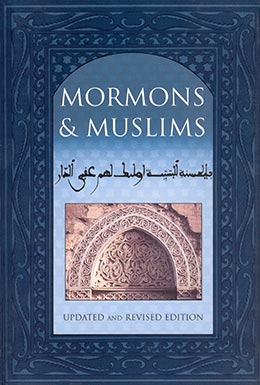Another Islam: Contemporary Indonesia
Frederick M. Denny
Frederick M. Denny, “Another Islam: Contemporary Indonesia,” in Mormons and Muslims: Spiritual Foundations and Modern Manifestations, ed. Spencer J. Palmer (Provo, UT: Religious Studies Center, Brigham Young University 2002), 205–8.
At the time of the symposium, Frederick M. Denny was associate professor and chairman of religious studies at the University of Colorado in Boulder. He is a graduate of the College of William and Mary in philosophy. He received his B.D. at the Andover Newton Theological School, his M.A. in the history of religions at the University of Chicago, and his Ph.D. in Islamic studies and history of religions at the same university. Professor Denny’s research and publications have focused on interpretations of the Qur’an. This essay was extracted from a longer slide presentation on the role of women in contemporary Indonesia.
As Minister Almsjah has described Indonesia’s vital new interpretation of Islam in our own century, I think it is equally impressive to recall that the tradition of making a vigorous hybrid of Islam’s religious principles and adaptation to local custom is an old Indonesian tradition that goes back perhaps six centuries. There is a great deal we can learn here about the interface of religion and culture.
Indonesia extends over a major part of the largest archipelago in the world, composed of approximately 13,700 islands—some of them very small—of which an estimated 6,000 are inhabited. The main islands are Java, Bali, Sumatra, Borneo (Kalimantan), Sulawesi (Celebes), and Irian Barat (West New Guinea). From east to west it occupies approximately the same range of latitude as the distance from Bermuda to San Francisco.
Java and Bali comprise only 7.2 percent of the land area but contain 64.9 percent of the population. Java’s economy is a continuation of a pattern centuries old that is based on its astoundingly productive peasant agriculture. It is also one of the older civilizations of Asia and, as Clifford Geertz pointed out in his Islam Observed, if anything, Javais an “overcivilized” part of the world. [1]
The modern republic of Indonesia, created after World War II, comprises about three hundred different ethnic groups speaking some 365 languages and dialects, of which some 250 are mutually unintelligible. A major development of nationalism was the creation of Bahasa Indonesian, a national language, developed from the Malay tongue.
The strong Islamic influence on Indonesian culture is comparatively recent, beginning perhaps in the fourteenth century and increasing in the fifteenth, sixteenth, and seventeenth centuries. However, the Hindu and Buddhist strains also add strong cultural elements and constitute significant minorities along with the Christians, among the approximately 90 percent of Indonesia that is Muslim. Java, for example, is characterized by the older aristocratic elites who are Muslim but who also pride themselves on being Javanese and do not completely repudiate the animism and mysticism of their Hindu-Buddhist past.
One of the most significant educational, social, and economic movements in Indonesia was the Muhammadiyah movement, founded early in the twentieth century as a development of the thinking of the modernist Muhammad Abdu of Cairo, and dedicated to religious reform and rethinking of Islamic principles. This movement has provided Indonesia with a sternly Islamic yet energetically progressive impetus toward improved education, health care, social work, and guild organizations. It is headquartered in Jakarta.
The National Islamic University—or college-level school system—has fourteen campuses in Indonesia and is a combination of co-educational colleges and theological seminaries. It focuses on Islamic subjects along with the more traditional modern curriculum. Students at these schools typically wear their regional costume rather than the more revealing Western dress for women, a subtle way of announcing simultaneously their Muslim and their national commitments.
Indonesia also has a system of institutes for children and youth of up to about eighteen years of age, where they learn to chant the Qur’an but also learn exegesis and interpretation. In some cases they are coeducational. National contests in chanting the Qur’an are also coeducational. Women are also included in classes for advanced study of the Qur’an and will become regional teachers in other coeducational schools in chanting, recitation styles, and exegesis.
The west central region of Sumatra, a ruggedly mountainous island forming the western boundary of Indonesia, contains one of the world’s most successful matrilineal and matrilocal societies, meaning that descent is traced through the mother and that the husband moves to the home of the wife. Assertive, proud, and strong, women are largely engaged in agriculture. Men spend a great deal of time traveling and, interestingly enough, operating restaurants that are renowned for their fiery padang cuisine.
In a typical traditional home, a long room in front is somewhat public. Guests are entertained and may even sleep there. The married women have separate rooms in the back of the house where husbands visit them at night. The sons of the household sleep in the mosque or bachelors house from the age of seven or eight until they are married.
This matrilineal society seems at odds, in many ways, with traditional images of sequestered Arab women and a male-dominated culture. It’s important, I think, to have these Sumatran images as a corrective, to remind us that Islam is a marvelously flexible religion that can accommodate a surprising range of local customs without jeopardizing the religious center of its doctrines.
Notes
[1] Clifford Geertz, Islam Observed: Religious Development in Morocco and Indonesia (New Haven: Yale University Press, 1960).
